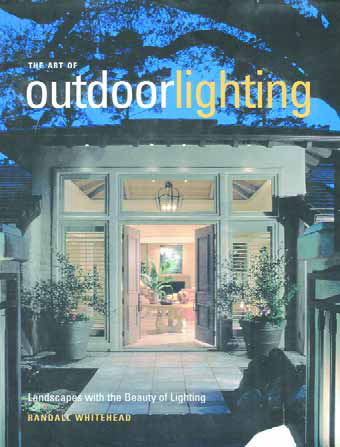landscape lighting
Landscape-lighting design is my obsession: Not only do I make my living at it, but it has also reached a point where it informs the way I look at every landscape and watershape I encounter - whether I'm working on those spaces or not. When I visit almost any site - and particularly when I spot an interesting garden - I almost instantaneously begin formulating ideas about how I'd light it. That's a good thing, because it keeps me professionally sharp, but it's also a bit addictive: Once you start visualizing how dynamic particular places can be when properly lit, you get hooked on the mental exercise and start enjoying the intensity of the experience. In the beginning, of course, those clear visualizations
We may be well into our ninth year of publication, but I'm still amazed and often amused by the ways that some people choose to describe WaterShapes. I've heard some armchair critics, for instance, dismiss us "a pool magazine that covers ponds," "a pond magazine that covers pools" or "a fountain magazine with
We may be well into our ninth year of publication, but I'm still amazed and often amused by the ways that some people choose to describe WaterShapes. I've heard some armchair critics, for instance, dismiss us "a pool magazine that covers ponds," "a pond magazine that covers pools" or "a fountain magazine with
It's often said nowadays that watershaping is the art of fitting our work into the surrounding environment. In many ways, what we do at Star Pools in Houston is a prime application of that powerful yet basic concept in the way we tackle both the opportunities and limitations of the residential settings we encounter. Houston is dotted by affluent neighborhoods teeming with homes in classic Mediterranean and Tuscan styles. Stately is a word often used to describe these homes, and because we've based our design philosophy firmly on the idea that the swimming pool and garden areas should look as though they were designed as part of the home itself, our work is largely a manifestation of
Maximizing the potential of landscape lighting is always about thinking ahead - a philosophy that absolutely applies when it comes to planning and designing the lighting for a watershape. The process begins with a set of questions that should be considered at the outset of any project: Is the watershape to be the focal point of the composition, or is it to be one among equally important features such as plantings, sculptures or hardscape details? Is the feature to be visually prominent at night, or is it to blend in with the darkness? Will the water you are lighting be in motion, or are you working with a still surface? Observers and chief vantage points also come into play. If the feature will mostly be viewed from passing automobiles rather than by pedestrians, for example, the issue of glare must be directly considered for safety reasons. If the watershape is to be seen from a lit interior space, then we know that its lighting level must be equal to or greater than that of the interior lighting. Likewise, relative brightness is an issue in making the illuminated watershape work with the rest of an illuminated landscape. The most important need in all of this is for
The fine points of landscape lighting are the worthy subject of The Art of Outdoor Lighting by Randall Whitehead (Rockport Publishers, Gloucester, Mass., 1999). It's a wonderful place to begin a journey of discovery: The text consists of 192 heavily (and beautifully) illustrated pages that break the discipline of lighting design down to several practical areas of concern - and there's a generous section all about ways to light waterfeatures. The verbiage throughout is both brief and focused, leaving most of the space for a parade of beautiful photographs of public and residential spaces. Simply by flipping through the pages and looking at some of these projects, you begin to see just how much interest and beauty can be created when you think about

















